Daily Mail quoted treasure hunter Brock Lovett, who worked on James Cameron's "Titanic", saying that at a depth of nearly 4,000 meters under the sea, the water pressure is about 3.5 tons/square inch (1 square inch = 0.000645 square meters). The 22.86 cm thick windows would disappear in 2/1,000,000 of a second if an explosion occurred.
Lovett made the statement when he recounted a diving expedition to explore the sides of the Titanic (a ship that sank in 1912), which coincidentally coincided with the tragic end of the Titan submersible.
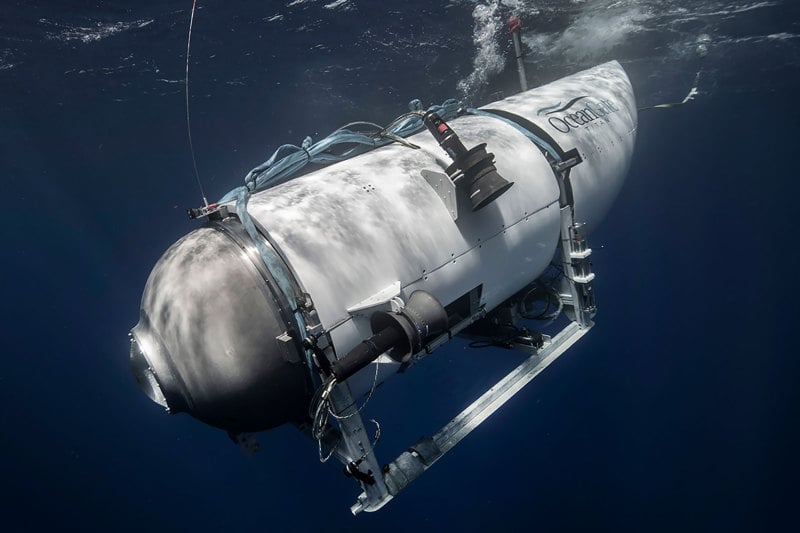
Titan submersible. Photo: SMH
After a robot discovered "multiple pieces of debris from the Titan submersible", about 487 meters from the bow of the Titanic at a depth of more than 3,800 meters, the US Coast Guard concluded that the submersible had "catastrophically exploded", ending all hope of rescue.
Officials said it was too early to determine when and how the explosion occurred.
At sea level, water pressure is 1 kg pressing down on 1 square centimeter. The deeper you go, the more water pressure increases. At the depth of the Titanic wreck, the Titan submersible would have to withstand a pressure of 375-400 atmospheres, equivalent to 2.5 tons/square inch. In other words, each square meter would be subjected to a pressure of 4,000 tons, according to Associate Professor Eric Fusil, University of Adelaide (Australia).
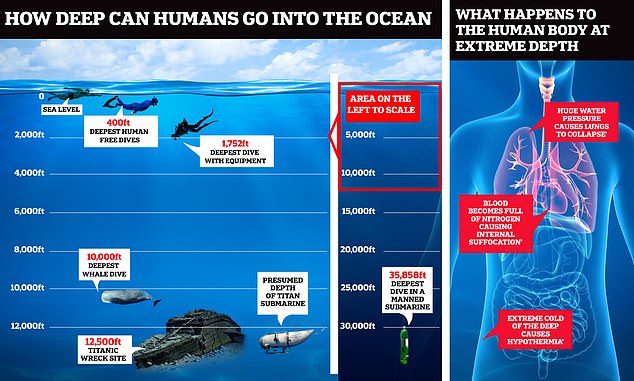
The Titanic wreck is at a depth far below the pressure threshold at which humans can survive. Photo: Daily Mail
Australian maritime archaeologist Emily Jateff once put a bag of Styrofoam cups outside the submersible during an expedition to the Titanic wreck in 2005. They were crushed to one-eighth of their original size.
In the case of the Titan submersible, the instantaneous explosion killed everyone in the compartment within 20/1,000ths of a second, like crushing a pressure vessel from the outside, says Associate Professor Fusil.
"It happens instantly. The human brain cannot process information at that speed. They will not know what happened," said Associate Professor Fusil.
Also, a small crack or defect could cause the Titan to explode. This is why shapes like spheres and cylinders are needed, which tend to balance the stresses within the material perfectly, and the materials must be able to withstand those high stresses.
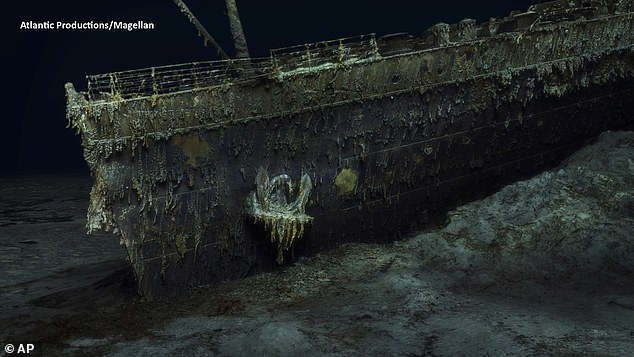
At the depth of the Titanic wreck, the Titan submersible would have to withstand a pressure of 375-400 atmospheres, equivalent to 2.5 tons/square inch. Photo: AP
Submarines that can go to extremely deep depths are built from a single metal material such as titanium.
According to Associate Professor Fusil, titanium is used because it is a highly durable material that can easily absorb deformation under a wide range of pressures. Titanium pressure vessels will only shrink and will return to their original shape without permanent deformation. This is called plasticization.
However, the Titan submersible is made of two materials: titanium and carbon fiber composite. Carbon fiber is very strong, in contrast to titanium. Associate Professor Fusil speculates that there may have been a defect in the bonding of the two materials used to make the Titan submersible.
It is believed that a hole in the Titan's hull caused it to blow itself up. Attention is now turning to the possibility of salvaging what remains of the ill-fated submersible, but things are not looking easy, due to the extreme depth and the possibility that debris or body parts have been washed away by the current.
Source


![[Photo] Scientific workshop "Building a socialist model associated with socialist people in Hai Phong city in the period of 2025-2030 and the following years"](https://vphoto.vietnam.vn/thumb/1200x675/vietnam/resource/IMAGE/2025/5/21/5098e06c813243b1bf5670f9dc20ad0a)
![[Photo] Prime Minister Pham Minh Chinh receives Rabbi Yoav Ben Tzur, Israeli Minister of Labor](https://vphoto.vietnam.vn/thumb/1200x675/vietnam/resource/IMAGE/2025/5/21/511bf6664512413ca5a275cbf3fb2f65)

![[Photo] Coming to Son La, let's "show off" with the Wallflowers](https://vphoto.vietnam.vn/thumb/1200x675/vietnam/resource/IMAGE/2025/5/21/627a654c41fc4e1a95f3e1c353d0426d)

![[Photo] Prime Minister Pham Minh Chinh receives the President of Asia-Pacific region of PowerChina Group](https://vphoto.vietnam.vn/thumb/1200x675/vietnam/resource/IMAGE/2025/5/21/0f4f3c2f997b4fdaa44b60aaac103d91)

























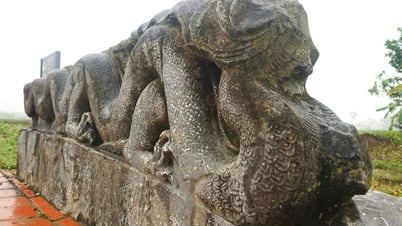







































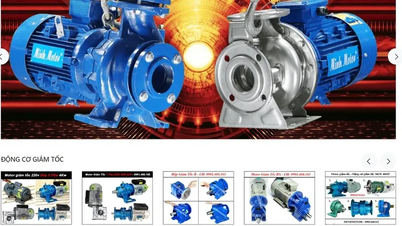






















Comment (0)